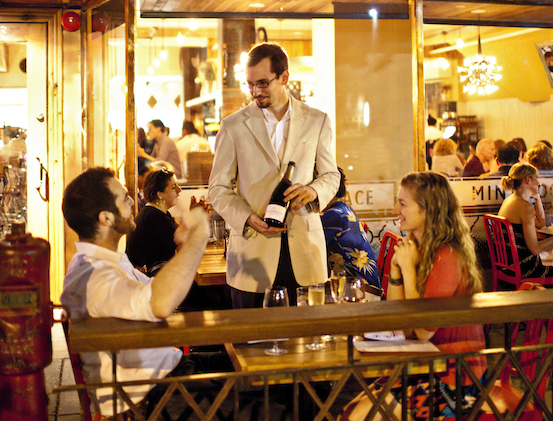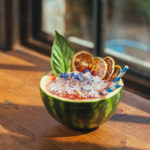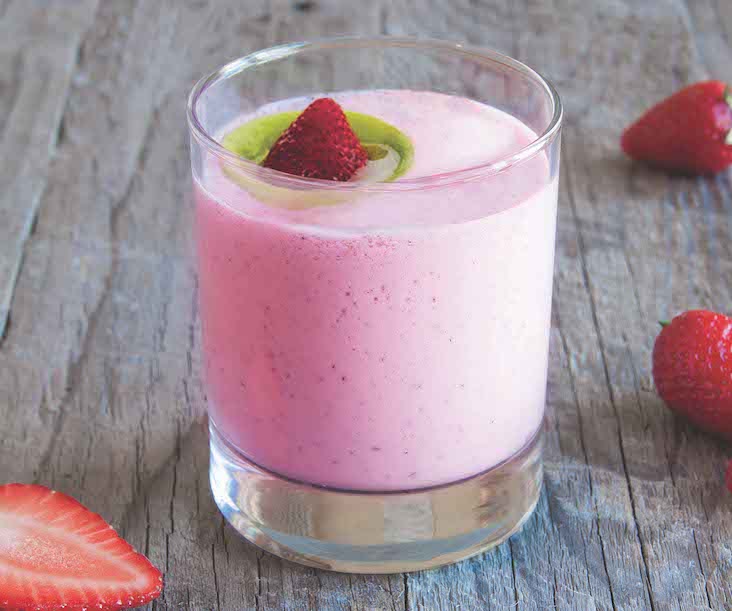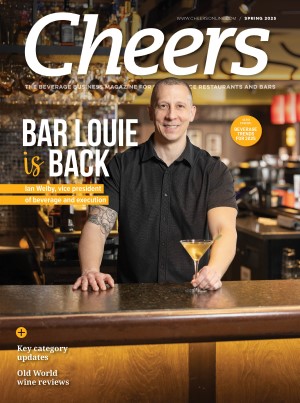Consumers love the bubbly: Champagne and sparkling wine volume consumption rose about 4% in 2019, according to the Beverage Information and Insights Group, reaching 24.9 million 9-liter cases. That marks the category’s 18th consecutive year of growth since 2002.
The increase was driven by the imported segment, which was up nearly 8%; domestic sparkling wines fell slightly. Just two brands among the top-10 domestic sparklers, both from E. & J. Gallo Winery, posted growth in consumption.Wycliff, #9, saw a 16.8% increase in 2019, and #4, Barefoot Bubbly, rose 4.3%.
Meanwhile, just two brands among the top-10 imported sparklers posted declines: Cupcake Sparkling, down 3.2%, and Martini & Rossi Asti, which fell 2.4%. The four prosecco brands in the top-10 imports—La Marca, Mionetto, Ruffino and Zonin—all enjoyed double-digit growth in 2019, while the cava brand Freixenet was flat with 2018.
Prosecco’s phenomenal growth has slowed, but the Italian sparkler’s volume increased 16.5% in the U.S. last year, according to IWSR data. Cava, the Spanish sparkling wine produced in the same method as Champagne, slid 6.9% in 2019, while Champagne volume was up 3.0%, a nod to the continuing trend of consumers trading up and seeking premium brands and beverages.
The coronavirus pandemic may put a pause on that, however, as it’s left more people unemployed and uncertain about the future and perhaps less inclined to spend. Impending additional tariffs on European wines that would include sparklers could also put a crimp in sales.
But sparkling wines have benefitted from a number of trends, including the proliferation of lower-cost and different styles, fun packaging, and consumer interest in aperitivo culture and spritz drinks.
Elvie’s restaurant in Jackson, MS, which specializes in seasonal fare from Southern farmers, finds that guests are choosing sparkling wine for all occasions, says beverage director/sommelier Brandi Carter. Elvie’s offers two sparkling wines by the glass—Freixenet Blanc de Blancs cava for $7 and Prince Alexandre Cabernet Franc rosé for $12—and nine by the bottle, ranging in price from $39 to $83.
“Due to the size of our list, we tend to switch our by-the-glass option up rather than having glasses compete against each other,” Carter says. “We love to educate our guests on the impact the grape and region has on the style of wine that they’re enjoying.”
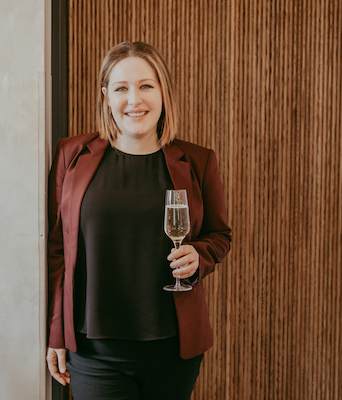
French brasserie Mintwood Place (shown atop) in Washington D.C. strives to make sparkling wine approachable to customers, says Gene Alexeyev, general manager/beverage director/sommelier. “We’re in a constant and active conversation with our guests.”
Mintwood Place, which offers 150 wines by the bottle, devotes four slots on its by-the-glass menu to sparklers, along with five still whites and five still reds. The restaurant changes one or two of the by-the-glass options every three or four weeks, Alexeyev says.
“What we pour is dependent on availability and distribution,” he notes. Guests expect to see certain wines and styles on the list, but it’s also important to offer something different, while keeping it affordable and accessible, Alexeyev says.
“One of the challenges of Champagne is that it has always been in an elevated category,” he adds. “We want to break out of that.”
Mintwood Place offers the Charles Orban Carte Noir Champagne by the glass for $22. Alexeyev explains that it’s a great example of grower Champagne, or a Champagne that’s produced by the same estate that grows the wine grapes.
France Beyond Champers
French producers outside of Champagne region make plenty of excellent sparkling wine called crémants. These include Crémant de Bourgogne, Alsace, Loire and Limoux, among others, and are made with the same technique as Champagne but generally use regional grape varietals.
Elvie’s for instance, sells the Albert Bichot Crémant de Bourgogne Réserve for $83 a bottle.
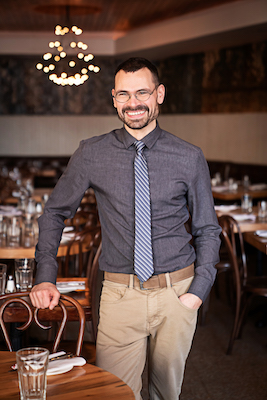
The Hôtel de Crillon, a Rosewood Hotel based in Paris, offers 220 different sparkling wines by the bottle across its dining outlets and bar, including 10 by the glass. Given the hotel’s location, “the king is Champagne,” says head sommelier Xavier Thuizat.
“But the Crémant de Bourgogne is very popular, due to the perfect quality of chardonnay that we can find in Burgundy,” he adds.
Cremant d’Alsace is “a great value, with special quality,” says Alexeyev, citing a chardonnay-based option from Camille Braun as a good introduction to French sparkling. Charles De Fere sparkling rosé from Alsace, a slightly off-dry, pinot-noir-based bottling, “is our go-to for celebrations and welcome toasts for regular and VIP guests.”
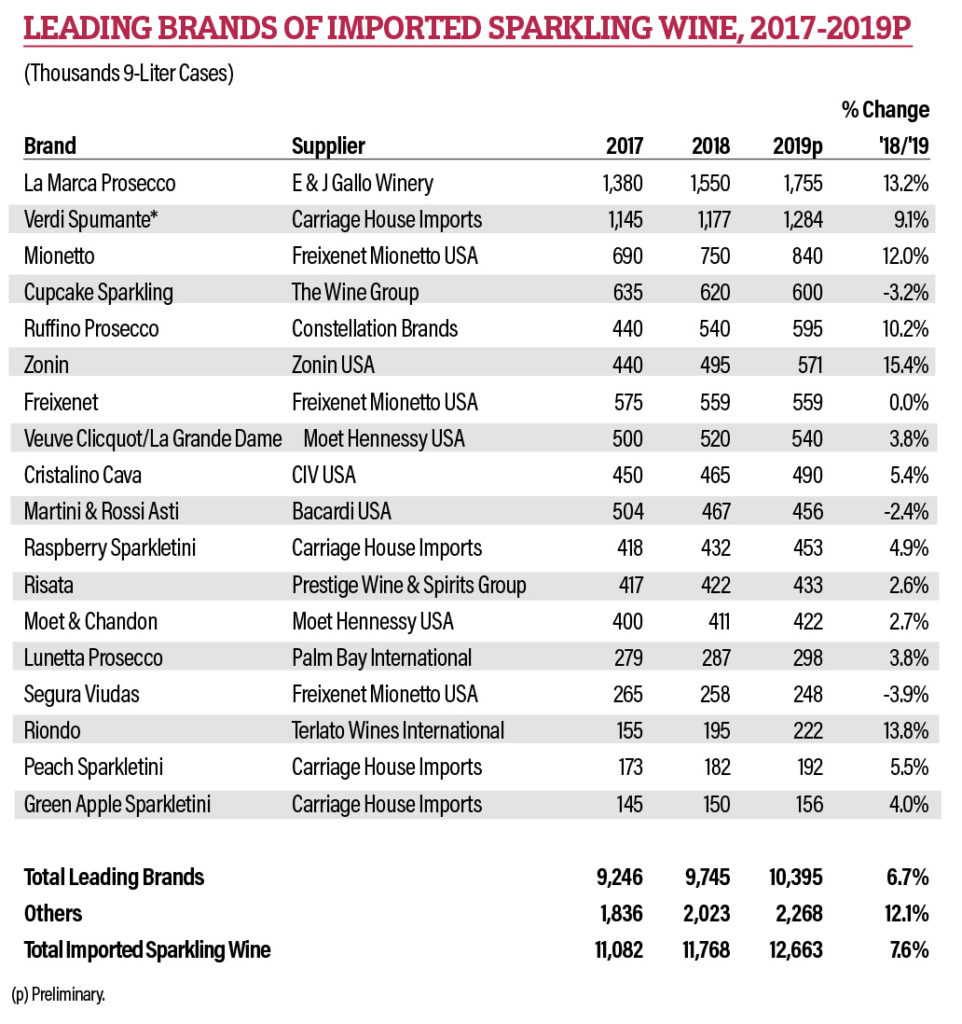
Limoux in the Languedoc region of southern France is said to be the birthplace of sparkling wine rather than Champagne. Benedictine monks at the Abbaye de Saint Hilaire in 1531 discovered bubbles in a wine that had been bottled and corked.
The three styles of Limoux sparklers are Crémant de Limoux, Blanquette de Limoux and Blanquette de Limoux Méthode Ancestrale. Saint Hilaire’s Blanquette de Limoux Brut typically sells in the U.S. at a suggested retail price of about $14.
Faire La Fête Crémant de Limoux has a suggested retail price of $19. Other Limoux producers available here include Domaine Rosier, Paul Mas, Domaine J. Laurens, Gerard Bertrand, Antech, and Calmel & Joseph, with prices ranging from $12 to $23.
On the Lambrusco
In addition to prosecco, Italy produces a number of other sparklers. Franciacorta from the north-central Lombardy region is often referred to as Italy’s answer to Champagne, as it’s made using the same method and with similar grapes. Asti (once known as Asti Spumante) and Moscato d’Asti, which is gently bubbled, or frizzante, are sweeter wines from the Piedmont region of northern Italy.
Pasta Sisters, a family-run Italian restaurant and fresh pasta shop with two locations in the Los Angeles area, offers two sparkling wines: Prosecco Acinum and Moscato d’Asti Marenco. Both are priced at $9.50 a glass; $35 a bottle.
Lambrusco, a sparkling red wine from the Emilia-Romagna region of Italy, has been bubbling up recently. Elvie’s sells the Cleto Chiarli Lambrusco di Sorbara Vecchia Modena for $49 a bottle.

“Lambrusco is my favorite sparkling wine to sell because there are so many misconceptions about it,” explains Carter. “The style that we carry is very dry and similar to a full, sparkling rosé.”
The perception that all Lambrusco is sweet still exists, admits Julia Prestia, owner of Venturini Baldini, which has been making organic Lambrusco and sparkling rosé wines since 1976. But the misconception has been changing, as producers have recently been using Lambrusco grapes to make dry, fragrant sparkling rosé wines.
“Consumers have been receptive to this new generation of dry premium Lambrusco—a departure from the ‘cheap and cheerful’ sweet fizzy wines that were often served with ice cubes” and tended to define the category in the 1980s, she says.
Tastings are fundamental to changing that perception, Prestia adds. “We spend a lot of time with consumers to let them taste the wines and explore our history; through this they discover Lambrusco as a multifaceted and affordable new wine category.”
Pairings that pop
Just as more consumers are discovering sparkling wines for everyday occasions, they’re also finding that bubbles pair well with many foods, particularly seafood.
Alexeyev will match the Schramsberg blanc de blancs 100% chardonnay sparkling wine with meatier seafood such as monkfish or swordfish. Go beyond the “white with fish categorization that seems outdated” and seek out a firm and rich sparkler for heavier dishes, he suggests.
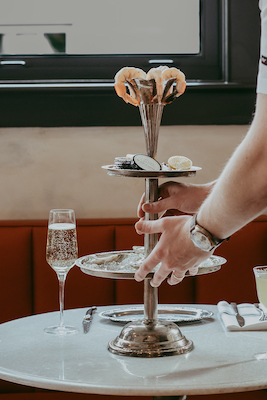
Marcellus Coleman, executive chef at the Fairmont Olympic Hotel in Seattle, suggests paring the lightly briny Kumamoto oysters with Lucien Albrecht Cremant d’Alsace brut rosé. The rosé provides a fruity yet dry finish that complements the slightly sweet and fruity finish of the oyster.
Indeed, “oysters, oysters, oysters and any sparkling wine is incredible,” says Carter of Elvie’s, “but I’ve been enjoying pairing Szigeti gruner veltliner brut with them recently.” Sparkling rosé with watermelon granita “is amazing,” she adds.
“I’m obsessed with Cleto Chiarli di Sorbara Vecchia Modena Lambrusco and our Poulet Chasseur,” Carter says The Hunter’s Chicken dish—crispy chicken thigh, mushroom and truffled Cognac jus—sells for $25 at Elvie’s.
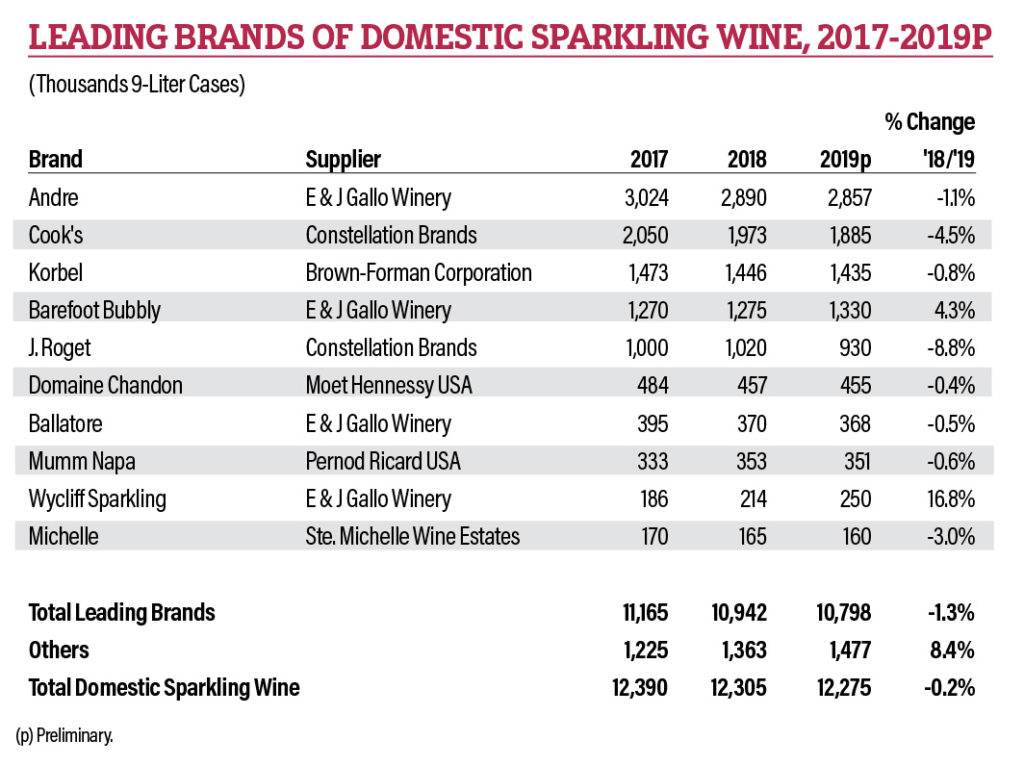
At Pasta Sisters, brand manager Giorgia Sinatra would match the prosecco with the restaurant’s Spaghetti Bottarga (spaghetti with dry Sardinian mullet fish eggs and garlic, extra virgin olive oil), as well as with appetizer plates such as caprese or cold cuts. Prosecco also pairs well with roasted salmon, she notes.
As for the moscato, the traditional pairing is with an apricot pie, Sinatra says, “but a very interesting combination could be moscato with a plate of prosciutto and cantaloupe.”
Hôtel de Crillon’s Thuizat likes to recommend sparkling rosé wine for its structure and presence; “they go particularly well with meat and game.” His ideal menu for sparkling wine?
“To start, pair white Champagne with a lobster jelly and cream flavored with fennel,” Thuizat says. “For the main dish, I would pair a vintage 2002 Champagne, which is more evolved, to create some emotion with a roti veal with butter, carrot mousseline and gingerbread powder.”
And finally, paying tribute to the new rosé prosecco appellation approved this past May, Thuizat says, “I would suggest a seasonal pie for dessert with strawberry and rhubarb.”
Bubbling beverages
As consumers have embraced the spritz culture and aperitivo hours, operators have followed suit with sparkling cocktails and lighter offerings.
Elvie’s offers a light style of sparkling sangria on its brunch menu. “We use cava, a little fresh lemon juice, a seasonal fruit- or vegetable-based syrup, and fruit/vegetable garnish served in a wine glass,” Carter says. For example, a summer sangria used purple snap pea syrup, lemon wheels, orange half wheels and a cucumber ribbon.
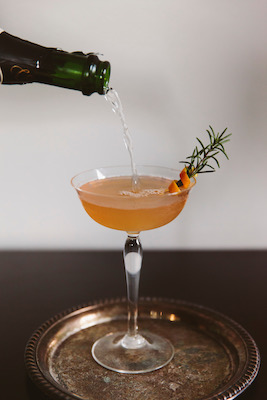
Another sparkling wine cocktail at Elvie’s is called the Sunday Stroll. Priced at $12, it’s made with vodka, orange water, rosemary syrup and lemon, finished with cava and garnished with a rosemary sprig wrapped with an orange spiral.
Mintwood Place always has one sparkling wine cocktail on its list of six drinks, Alexeyev says. A favorite is the 20th Century Vermont ($12), a play on the French 75.
The cocktail, which references the 20th Century Limited, a luxury express train that ran between New York’s Grand Central Terminal and Chicago from 1902 to 1967, combines gin, fresh orange juice, lemon, a touch of maple syrup and sparkling wine. It’s served in Champagne coupe “to get the full aromatics,” Alexeyev says.
Less is more
Innovation in packaging such as boxes and cans has helped boost wine sales. When it comes to sparkling, alternative bottle formats such as magnums and single-serve mini bottles have been popular.
Champagne brands often opt for flashy packaging, such as Beau Joie Champagne’s copper-encased bottle. The brand, with a suggested price of $69 to $89, is available at Mastro’s Steakhouse, the Wynn in Las Vegas, and several Four Seasons Hotels. Beau Joie has recently seen increased interest on-premise because of the notion that copper can destroy bacteria and viruses.
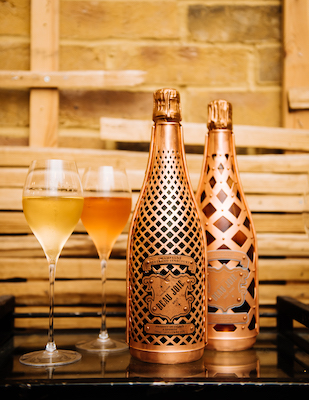
Luxury accounts aside, the coronavirus has prompted many on-premise operators to go with smaller formats with sparkling wines, to appeal to guests who may not want to spend a lot or linger in a restaurant. Alexeyev has started bring in half-bottles of sparkling wine at Mintwood Place “for the uncertain stage of dining” caused by the pandemic.
With smaller groups of guests spending shorter amounts of time at the restaurant, “magnums don’t quite make sense until people are more comfortable being out,” Alexeyev says. “Now that we’re in a narrower dining tunnel for a while, some of the more experimental [wine formats] may have to hold.”
Elvie’s sells Philippe Fontaine Champagne Brut Tradition by the half-bottle for $72, which Carter says is at a 35% cost. “We’re all about education and finding something on our list for whatever type of experience our guests are looking for that day,” she adds. Guests typically need tutelage on the different types of sparkling wine, and many still refer to all sparkling wine as “Champagne.”
Although some Hôtel de Crillon guests understand the differences in sparkling wines, “we are there to educate them during their visit,” Thuizat says. “In particular, we try to demonstrate the potential of a sparkling wine alongside our great cuisine.”
Marketing sparkling wines “is always a conversation, a moment of education,” agrees Alexeyev. But the conversation has gotten a lot easier.
“In the 10 years that I’ve been running wine programs, guest knowledge has skyrocketed—especially among younger guests.”

